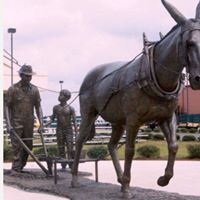When and where did the first lethal gas attack during WWI take place?
By 22 April 1915, the German Army had 168 tons of chlorine deployed in 5,730 cylinders from Langemark–Poelkapelle, north of Ypres. At 17:30, in a slight easterly breeze, the gas was released, forming a gray-green cloud that drifted across positions held by French Colonial troops from Martinique who broke ranks, abandoning their trenches and creating an 8,000-yard (7 km) gap in the Allied line. However, the German infantry were also wary of the gas and, lacking reinforcements, failed to exploit the break before the 1st Canadian Division and assorted French troops reformed the line in scattered, hastily prepared positions 1,000–3,000 yards (910–2,740 m) apart. The Entente governments quickly claimed the attack was a flagrant violation of international law but Germany argued that the Hague treaty had only banned chemical shells, rather than the use of gas projectors.
More Info:
en.wikipedia.org














